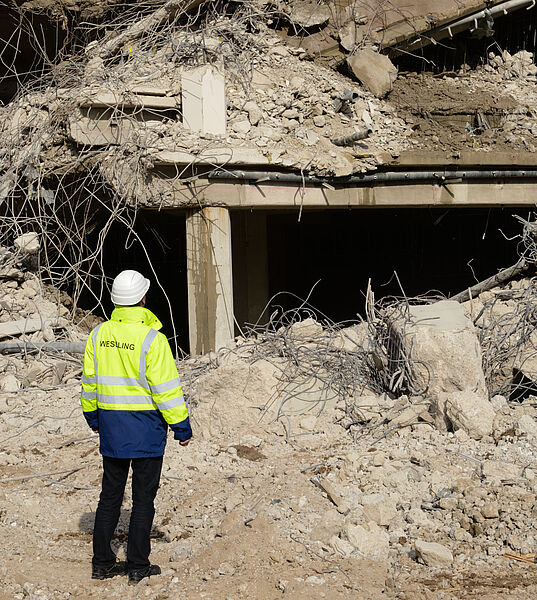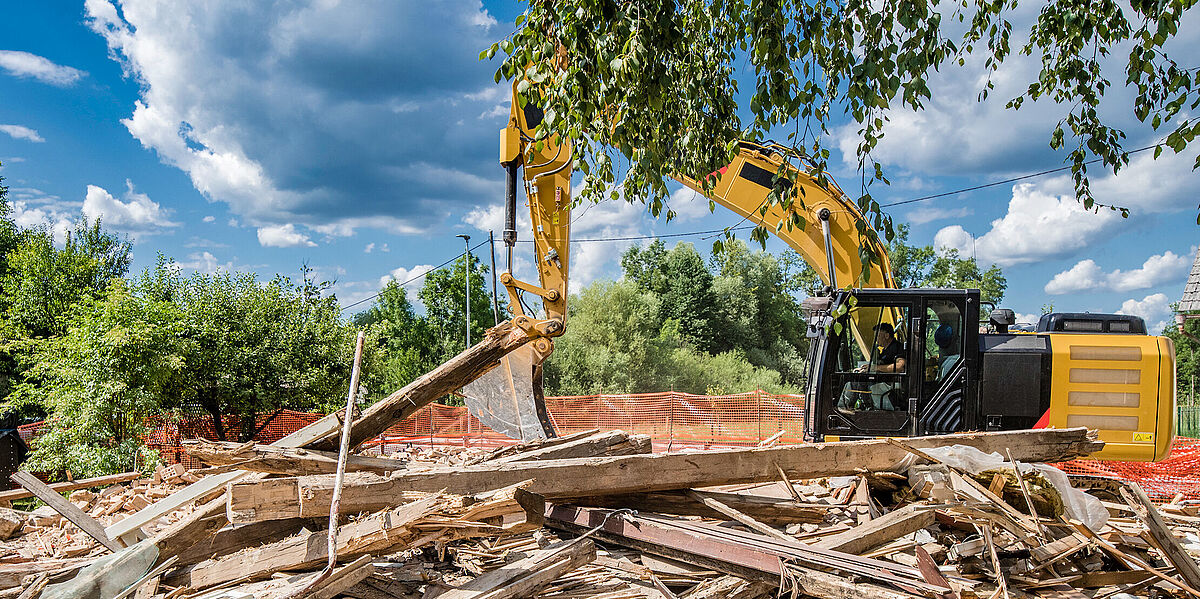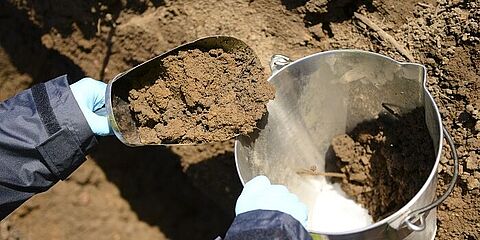Recycling and disposal: mitigating risks through analysis of demolition material
The Commercial Waste Ordinance specifies which materials must be separated during the demolition of buildings or structures such as roads, in order for them to be recycled or disposed of properly. These materials include, for example, glass, plastics, metals, wood, insulation materials, bitumen mixtures, gypsum-based building materials, concrete or bricks. For some of these materials there are additional special analytical requirements where WESSLING, as an independent laboratory, is happy to provide support. The results of the analysis provide planning security for construction projects with regard to the proper disposal of the material.

Identifying asbestos and PCB in building material and mitigating risks
Our analyses show whether the tested material is hazardous waste and therefore requires special disposal. This includes, for example, asbestos, for which the owner has an obligation to test in order to protect users of the building. Asbestos was mainly used in building materials in the 1960s and 1970s. From 1984 on, only weakly bonded asbestos was initially banned in Germany, so the substance continued to be used in building construction until 1995. Since asbestos was only completely banned in the European Union (EU) in 2005, even relatively new building materials may still contain asbestos. Today it is known that the substance is carcinogenic and can cause asbestosis. The interaction of asbestos dust and polycyclic aromatic hydrocarbons (PAH) in particular leads to a significantly increased risk of lung cancer.
Often, the waste code number can only be specified with a laboratory analysis. This number is also called the mirror entry and designates different types of waste in the Waste Catalogue Ordinance.

Wall paint, joints or adhesives can also contain hazardous substances such as the plasticiser polychlorinated biphenyls (PCB). Risks also arise from floor tiles containing PAH, or water pipes made of lead. Some materials may also release formaldehyde or diisocyanates, and wood may be painted with pentachlorophenol or other wood preservatives that are hazardous to health. WESSLING supports you as an independent laboratory with comprehensive analyses. We test, for example:
- Bituminous mixtures of base and binder courses in road construction: analysis for PAH (polycyclic hydrocarbons), metals (e.g., mercury), phenol index and PCB (polychlorinated biphenyls)
- Insulation materials such as polystyrene: Analysis for HBCD (hexabromocyclododecane)
- Other mineral insulating materials: analysis for artificial mineral fibre (AMF) content
If requested, we can also support you with expert advice.
Your contact
- Annegret Beckmann
- +49 511 5470021
- annegret.beckmann@wessling.de

Recycling in building demolitions: WESSLING’s involvement in the new RECBest research project
The new RECBest research project is also concerned with optimising the use of recyclable material from building demolitions. Our WESSLING expert Dr Jens Reiber is the coordinator of the project which has been funded for the past two years by the Federal Ministry of Education and Research (BMBF). Please find more information here.



